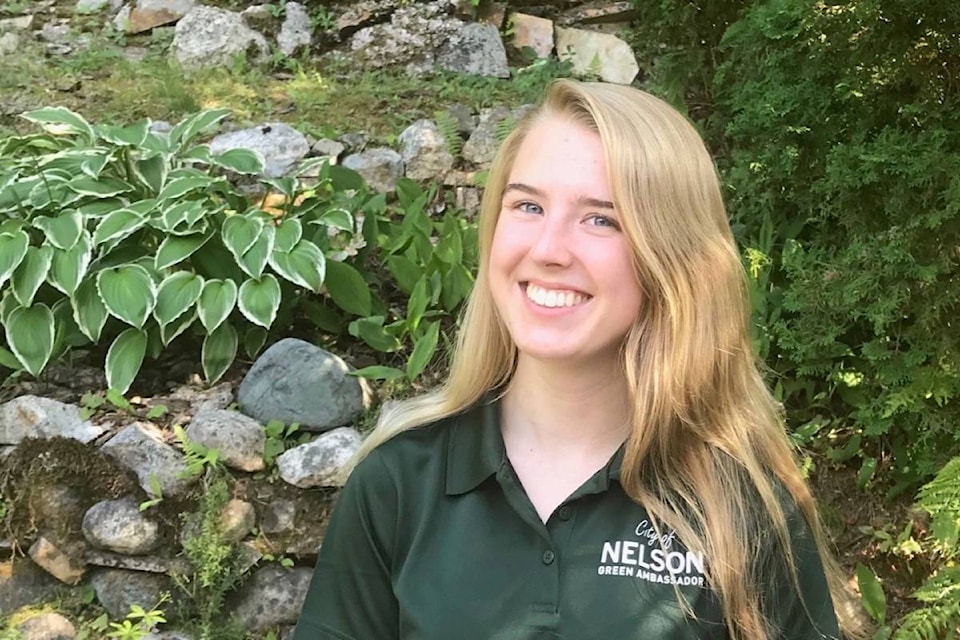By Kyra Burkart
Living in the Kootenays surrounded by lakes and rivers, it’s hard to imagine how we could ever be short on water. Yet, each year our community places restrictions on our water use. While we may have large bodies of water close by, they aren’t used for drinking water.
In Nelson, our drinking water is primarily supplied by Five Mile Creek which provides us with crystal clear, clean drinking water. Because this creek is in our upper watershed, our water system is gravity fed and does not require costly, operations-heavy pumping to operate. While we are lucky to have such a high quality, cost efficient water source, it can be limited in summer months.
Five Mile Creek relies on snowmelt and annual precipitation for its replenishment — both of which are low in the summer months. Meanwhile, in the summer, we can nearly double our water consumption through outdoor watering. Together, these factors place a great deal of stress on Nelson’s water supply which risk it being unable to replenish and recover overnight.
The City of Nelson does its part to conserve water by irrigating parks with non-potable water, and replacing and maintaining water infrastructure on an ongoing basis to reduce leakage. However, the community’s support is needed to reduce household water consumption.
Water restrictions allow us to limit the strain put on our water supply in summer months and ensure adequate water availability for our community and for fighting fires during this period. Nelson recently moved to Stage 2 mandatory watering restrictions which means that residents must:
• Limit sprinkler use and lawn watering to once a week (Even-numbered addresses water on Wednesdays and odd-numbered addresses water on Thursdays).
• Not use water to wash sidewalks, driveways and buildings.
• Not water new sod or new grasses plantings outside of watering restrictions.
• A full description of water restrictions is available at nelson.ca/water
What does this mean for my lawn?
When watering restrictions are implemented, most of us worry about what that means for the health of our lawns. Lawn space provides us with an attractive green area, perfect for kid’s play and backyard barbeques.
Adhering to water restrictions should not mean sacrificing the health or appearance of your lawn. If you follow the following tips and tricks, you will be able to keep a healthy lawn while still protecting our water source.
1. Water deeply once a week
The key to a healthy turf space is developing a strong grass root system through deep, infrequent watering. While lawns do require a lot of water, it’s not as much as most of us might think.
It’s tempting to want to water your lawn every day to keep it green; however, in reality, most lawns only want to be watered once a week. In fact, short, frequent watering can threaten grass health.
Turn on your sprinklers once a week for a full hour to water your grass deeply and allow for the development of a solid root system which will leave your turf looking lush and green.
2. Don’t water during the day
Watering your lawn during the day not only goes against watering restrictions, but it is also an inefficient method of watering. By using your irrigation system in the heat of a summer’s day, you may lose over half of the water to evaporation before it even hits the ground.
Make sure you are watering between 4 to 9 a.m. or 7 to 10 p.m. to make the most of your watering time.
3. Avoid cutting your grass short
Keeping your lawn short might leave it looking like a golf green, but its health may suffer under hot summer conditions. Cutting your lawn too short exposes surface roots, dries the soil, and limits the grass’ ability to compete with weeds. Conversely, tall grass allows for healthy root establishment, reduces evaporation, and chokes out weeds.
Have your lawn mowers blades sharpened annually and set them slightly higher. As a general rule, don’t cut off more than one-third of the grass at any one time. Most lawns are healthiest when kept between 2.5 and 3.5 inches tall.
4. Consider re-seeding your lawn with a water-wise grass mix
The amount of water your lawn needs to stay green is also dependant on the type of lawn you have. Kentucky Blue grass is a popular lawn choice, but has a shallow root system that sucks up a lot of water.
Lawns composed of fescue grass, native rye grass, or micro-clover are better suited for hot summer conditions and require much less water. You can talk to your local garden centre to see what water wise grass blends would work well for your lawn.
For more information on how to care for your garden and lawn in water limited conditions, please visit nelson.ca/water.
Kyra Burkart is the Green Ambassador for the City of Nelson. If you have questions about water restrictions or want to know more about what you can do to conserve water, contact Kyra Burkart by email (gambassador@nelson.ca) or phone (250-352-8102).
